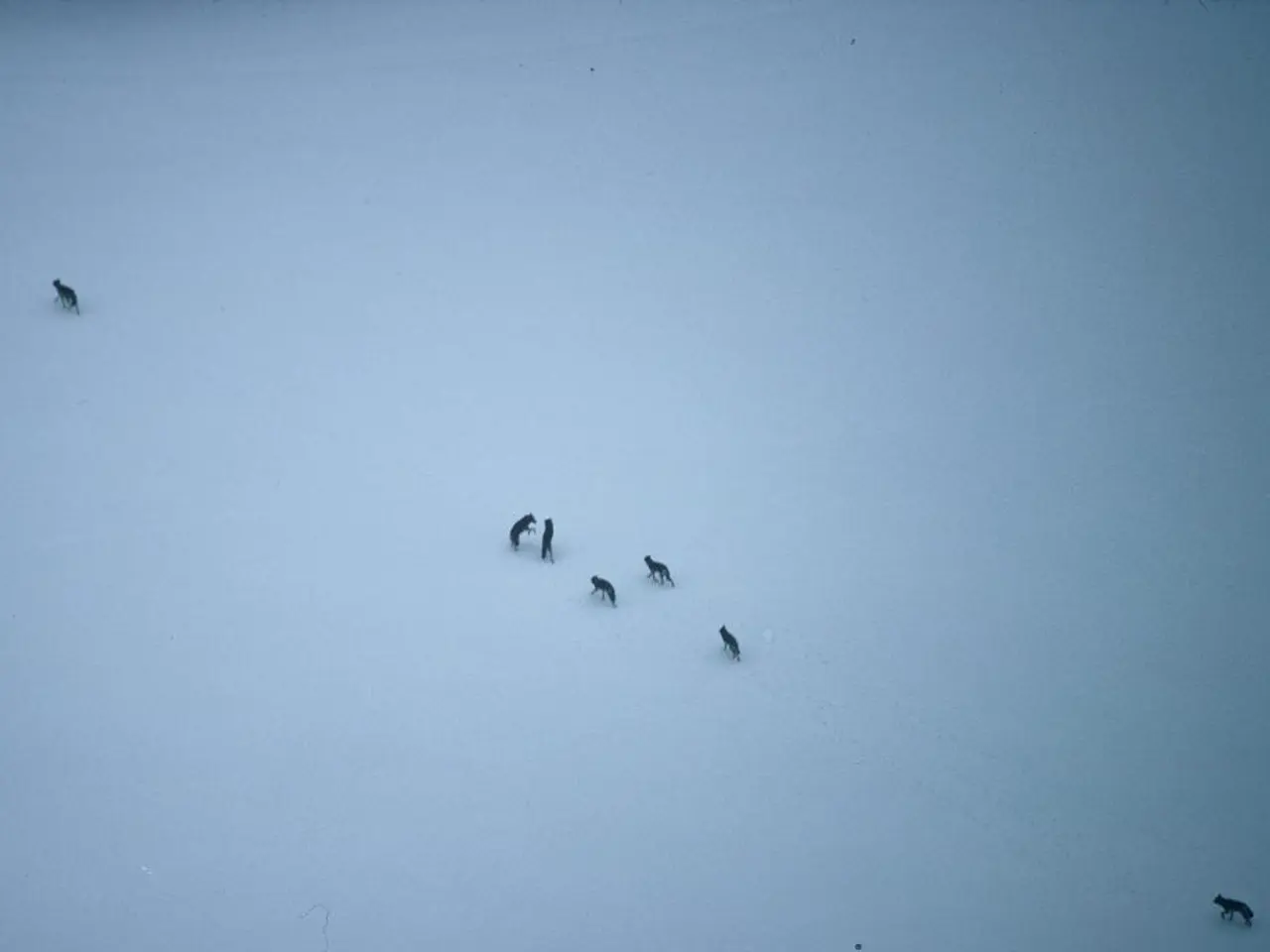Tirol intentionalizes intensified wolf persecution
In the picturesque landscapes of Austria, a balance is being sought between the protection of a growing wolf population and the needs of farmers and conservation efforts.
Around 100 wolves are estimated to roam Austria, primarily in Carinthia, Tyrol, Salzburg, and Vorarlberg, according to the Protection Center for Bears, Lynx, and Wolves. Despite the increased population, the damage caused by the predators has significantly decreased. In 2022, around 2,000 sheep, goats, and cattle were reported as killed, injured, or missing, compared to about 900 in the previous year.
To manage the wolf population and mitigate its impacts, Austria is implementing various measures. These include herd protection measures on alpine pastures, such as the use of night pens, livestock guarding dogs, and fencing for sheep and goats. These preventive measures have been tested across regions like Carinthia, Upper Austria, Salzburg, Styria, and Tyrol.
Authorized removal (culling) of problem wolves is another strategy employed in areas with repeated livestock attacks. For instance, in the Upper Vinschgau Valley, individual wolves responsible for predation have been removed.
Scientific monitoring linked to wider conservation policies and stakeholder engagement is also a crucial part of Austria's approach. Projects like LECA improve the monitoring of large carnivores, including wolves, to better prevent conflicts with humans and livestock.
Austria's agriculture minister, Norbert Totschnig (ÖVP), supports these measures, stating that they are not just about protecting mountain farmers but also addressing the wolf's encroachment into settlement areas and playgrounds. The primary goal of the expanded hunting is to protect approximately 2,000 alpine pastures in Austria.
Tyrol's governor, Anton Mattle (ÖVP), has announced plans to expand wolf hunting with annual shooting quotas. Since 2023, approximately 35 wolves have been shot in Austria, according to statistics.
However, wildlife protection organizations like WWF view the wolf as a natural health police, primarily preying on sick and weak ungulates. Larcher, Tyrol's chief hunter, believes that the significance of the wolf as a regulating element in the natural cycle is greatly underestimated.
It is worth noting that the EU has recently reduced the wolf's protection status from "strictly protected" to "protected," in line with Austria's wishes. This decision reflects ongoing tensions between conservation and human interests in large carnivore management, a topic that extends beyond Austria's borders.
Sources: [1] Carinthia's Wolf Protection Measures [2] Upper Austria's Wolf Management [3] Salzburg's Wolf Protection Measures [4] LECA Project [5] Ongoing Tensions in Large Carnivore Management
In the context of Austria's changing wolf population and its impacts on farming communities, discussions surrounding policy-and-legislation and politics are ongoing. The EU's decision to reduce the wolf's protection status from "strictly protected" to "protected" reflects these debates, as the country implements measures like authorized removal and scientific monitoring to manage wolf populations and minimize conflicts with general-news such as farming and conservation efforts.






